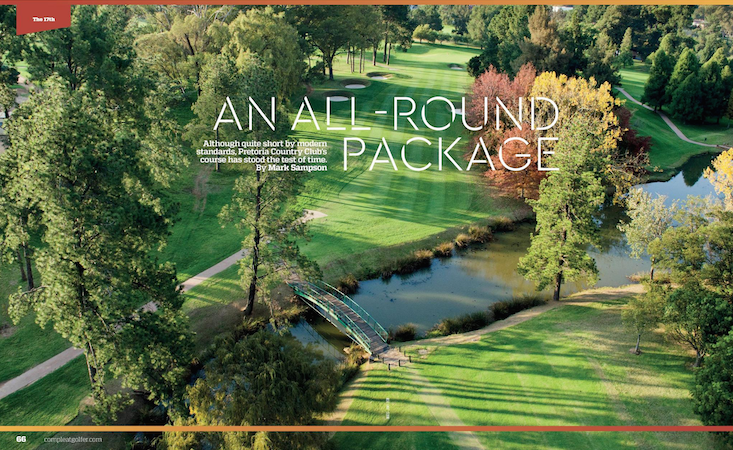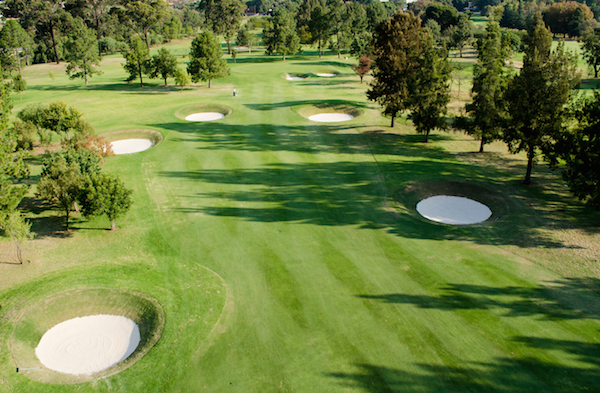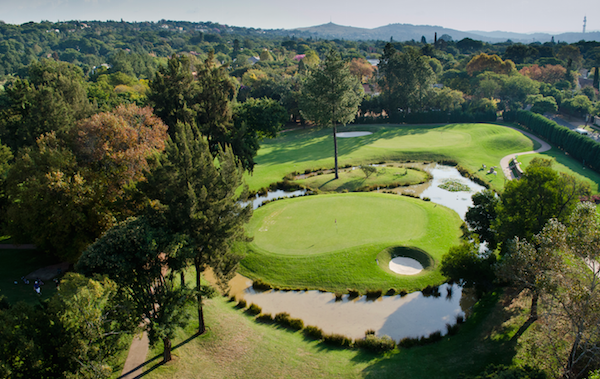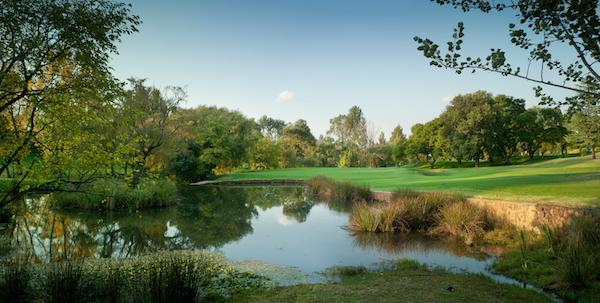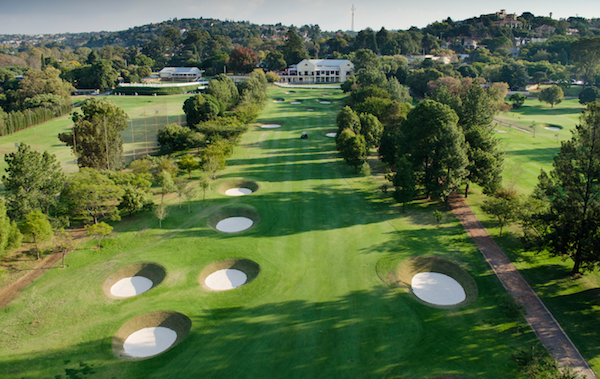Although quite short by modern standards, Pretoria Country Club’s course has stood the test of time, writes MARK SAMPSON in Compleat Golfer.
What makes a course great? It is an age-old question that, a bit like ‘What is a true links course?’, seldom ends in a conclusive answer.
The layout and flow, linked to location, are always a big plus factor. A beautiful location doesn’t necessarily mean a beautiful course, as conditioning also influences playability and enjoyment.
It could be a course where one scores well, as everyone has their favourite. Others would argue the 19th hole and atmosphere are high on the list of importance.
When driving away, the experience, from arrival to departure, course layout, conditioning, staff and anything in between are what will leave a positive or negative memory.
Pretoria Country Club is one such place: stories abound of its greatness, on and off the course. Its timeless layout, although not that long, has shown up a few seasoned pros.
Its long list of members, many of whom would also be at the top of most VIP lists, alludes to its popularity and status in the golfing fraternity.
Tucked away in the upmarket suburb of Waterkloof, Pretoria CC’s history is long and convoluted. In 1909 the land owner, Julius Jeppe, who owned a ‘shooting lodge’, as it was known then, decided that a country club with a golf course was needed in the area.
A meeting at the town hall was called and the formation of a country club proposed. It needed 300 citizens to sign up as founding members for it to go ahead. Suffice to say, in excess of that number signed up, and Pretoria Country Club, or as members refer to it, ‘Country Club’, began.
The course was initially designed by a British professional golfer Clarrie Moore, but was given its shape by golf architect Bob Grimsdell in 1948. It stretches 6 202m with large bent-grass greens and kikuyu fairways; a traditional parkland layout with massive trees shaping the majority of the fairways.
The course had a facelift in 2004-05 by the Gary Player Design Group, who added bunkers and resculpted others. The aim of the exercise was to add some teeth to the layout, which it did, but unfortunately it also left a number of members a bit disgruntled.
Close to 10 years on, DDV Design restored a more amicable balance, with some bunkers being filled in and others restored to a normal hazard – and not one where Monday school players were lost forever.
Essentially, what is left, is a strong layout with numerous factors inhibiting scoring. Accuracy off the tees is a necessity, otherwise you can expect to be playing out sideways between the trees. The bunkers, which are generally deep pots, are to be avoided, especially as they have a lot of soft sand, which can take some getting used to. The final facet to its armoury is relatively large greens, which, under tournament conditions, can be very fast (11.4 feet for the Tshwane Open, but ordinarily 9.5 feet).
The front nine starts with a strong 386m par four which winds its way through the trees. A number of bunkers in the landing area and two greenside contribute to this stroke two’s difficulty. The 2nd is a much shorter par four at only 327m, where the driver is best left in the bag. Although short, the dogleg left and numerous bunkers on the corner and surrounding the green need negotiating.
The 3rd is another strong par four of 367m, rated four. Although relatively straight, two well-placed bunkers on either side of the fairway are like two bullies eyeing you from afar. Avoiding the greenside water hazard and bunkers can also prove difficult with a medium to short iron. The 4th is a par five and the first genuine chance of a birdie for the longer hitters as its 459m can be covered in two shots. A water hazard up the right side of the landing area is this hole’s protection. If laying up, avoid the bunker short and another water hazard right of the green.
The 5th is a long par three through a chute of trees. Its large, sloping green – 27m in length – has two bunkers right and one left. The 6th is a proper risk-and-reward hole with five fairway bunkers in the landing area. Avoid those and a short-iron will be left to the elevated green; find one of them and the short-iron will still be required to splash out.
At 321m the 7th is a short par four with the fairway narrowing from the tee. The green is relatively small by course standards, and with water left and right it can be an elusive target. The 8th is a short par three, picturesque with its green surrounded by water. It’s a 9-iron or less for most, but the water’s intimidation value is not to be underestimated.
The 9th eases you back to the clubhouse along a 495m par five. Accuracy off the tee is needed as the landing area is bunkered left and has a water hazard right. For those going for it in two, the 15m-wide green has bunkers front and right.
The back nine has a tough start with strokes three, seven, nine and one. The 420m 10th is a strong dogleg right to a well-bunkered and elevated green. Another par four follows, and although straighter, a large pot bunker on the left of the fairway must be kept in mind. The long, narrow green is protected by bunkers left and right.
The 567m 12th is one of those holes that instantly comes to mind when you think of Pretoria CC. Out of bounds down its left side and four bunkers right of the landing area greet you from the tee. Getting up for two is unlikely, so staying in play and leaving a short third to the green should be the focus. The stroke one of the course is a 409m uphill par four. The sloping fairway with three bunkers in the landing area and well-contoured green make for a tough par.
Some respite can be expected from the par-three 14th. At 127m it’s not long, but be sure not to land short of the green as the ball will most likely roll back into the water hazard. Pretoria CC’s signature hole is the 15th. Golf director Athol Dowie talks us through the best way to tackle it on page 73.
The 16th is the longest par three on the course. The hole measures 189m, and with the green lying well below the tee, with water left and two bunkers right, club selection is difficult. The longest par three is followed by the shortest par four. At 301m, the 17th can be reached; however, finding one of the many bunkers lining its fairway and green could prove costly.
The 18th is one of SA’s most recognisable finishing holes. Having 14 bunkers from start to finish, with the fairway rising to the green and clubhouse beyond, it’s as beautiful as it is dangerous. It’s best treated as a three-shot hole while tip-toeing around the traps.
The course, its staff and facilities will most likely leave a lasting memory in any visitor’s mind. The long list of members and facilities is a token of its popularity and quality.
As for the course, the number of tournaments it has hosted is also long, from the Vodacom Tour Championship to the Tshwane Open, which is co-sanctioned by the European Tour. It may not be the first course on which golf was played in Pretoria, but with its tradition, stellar conditioning and accessibility, it remains a firm favourite.
GREENFEES
Members: 18 holes R425, 9 holes R270
Affiliated visitors: 18 holes R850, 9 holes R650
Students (affiliated): 18 holes R270, 9 holes R175
Carts: R250
CONTACT DETAILS
012 460 6242/3/4/5, [email protected]
– This article first appeared in the April issue of Compleat Golfer


